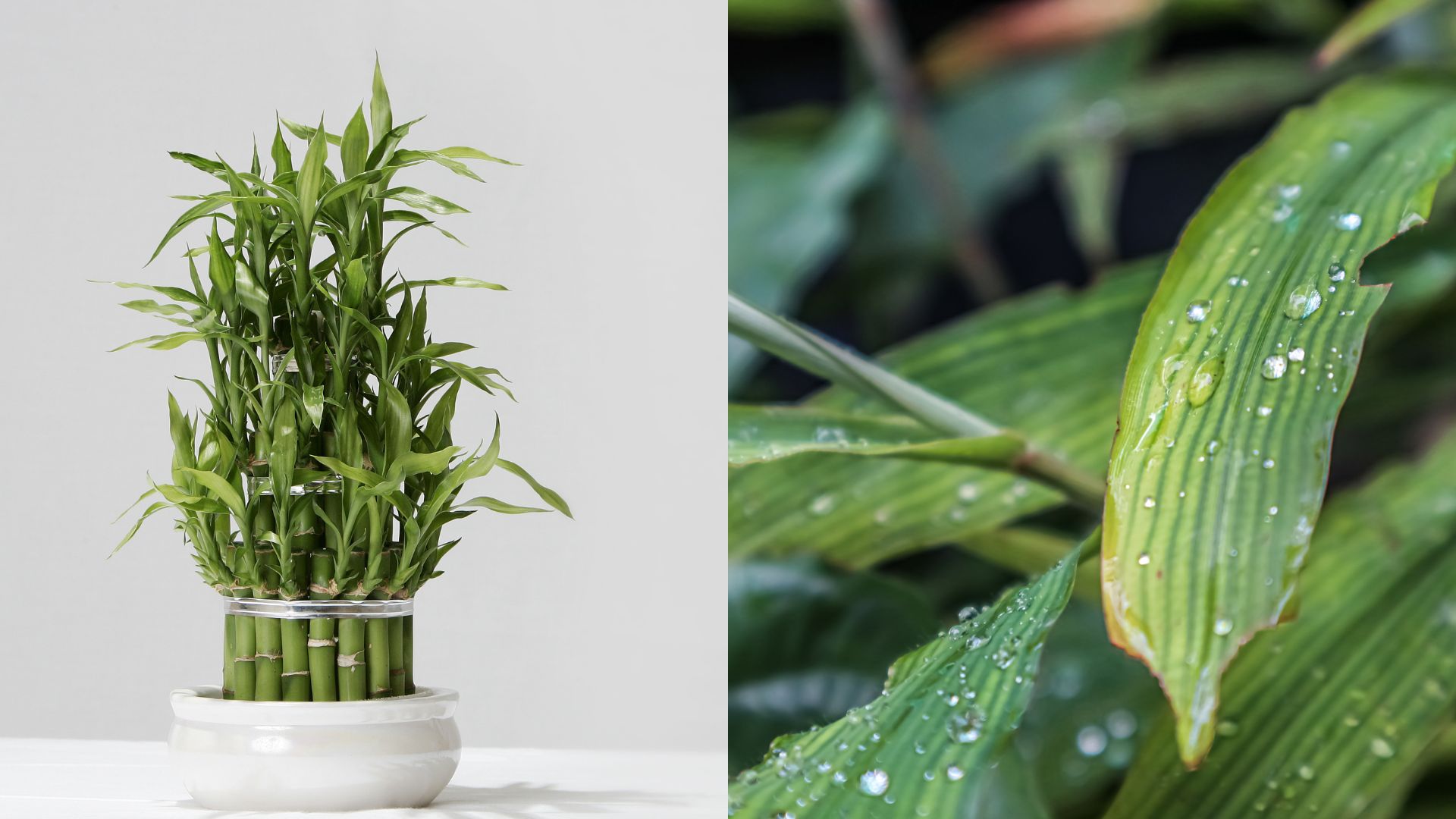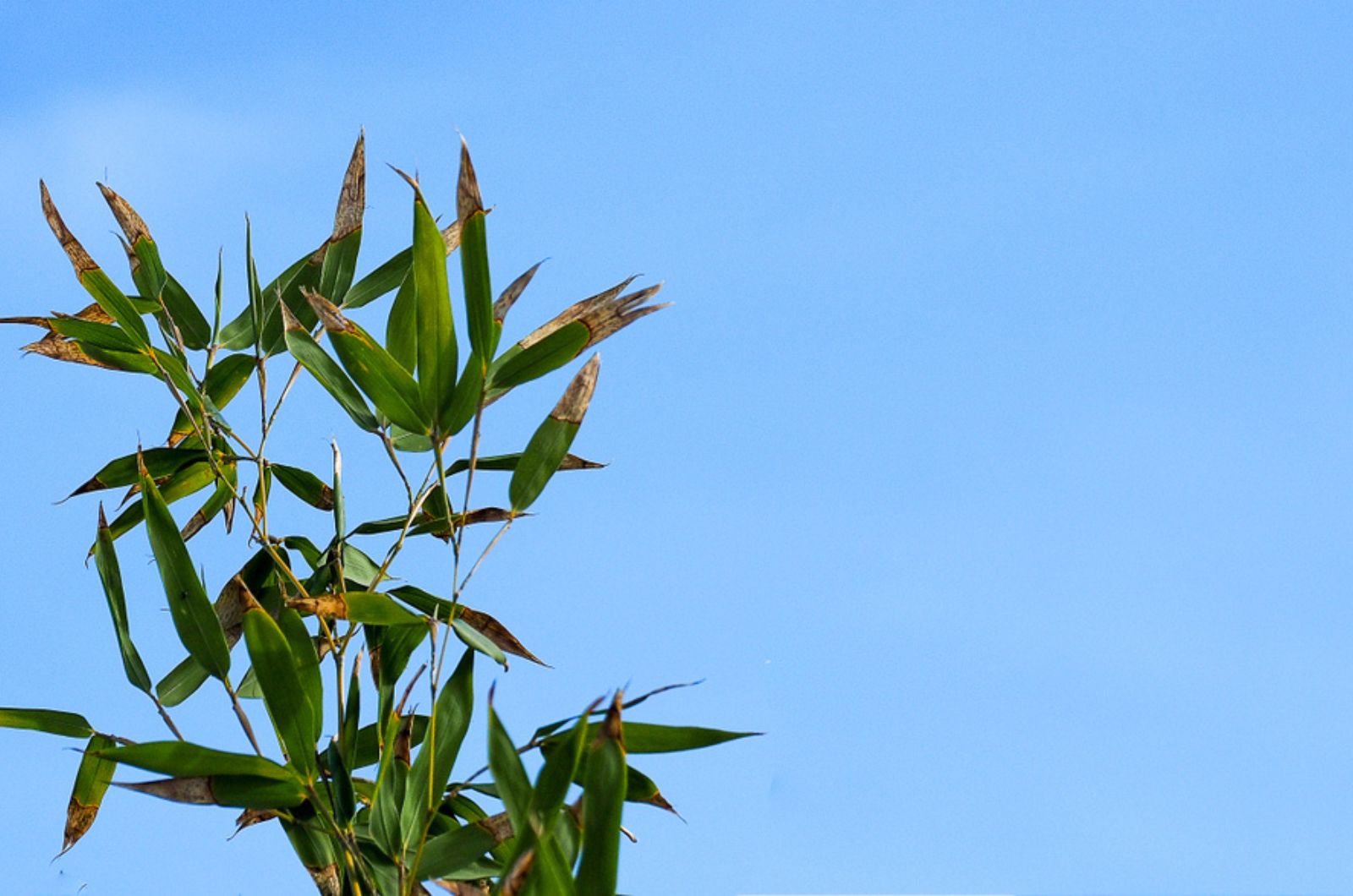Bamboo plants are known for their vibrant green foliage and fast growth. It is also often referred to as lucky bamboo, and it is believed that this plant brings luck and prosperity to our homes.
But what happens when your lucky bamboo starts to turn yellow and is looking less than lucky?
Well, it’s time to figure out the possible causes, and for that – you will need some extra luck!
Fortunately, we are here to help you. So, here are the possible reasons why your bamboo plant turns yellow.
1. Water Contains Chemicals
Sometimes, the water you’re providing for your bamboo might contain chemicals like chlorine or fluoride. While most houseplants are hardy and can adapt to different water types, bamboo is one of those plants that’s fussy about the water they receive.
Chlorine and fluoride can build up in the soil, which affects the bamboo’s color. Using filtered or dechlorinated water can help keep your bamboo vibrant
What you can also do is let the tap water sit in a container overnight, and then use it to water your lucky plant. Also check out the best tips for watering bamboo plants.
2. Plant Age
Bamboo goes through a natural aging process just like any other living thing. As bamboo matures, it may develop a yellowish tone on its lower leaves. This is often a normal part of the plant’s growth, and you can remove these older leaves to maintain a fresh, green appearance.
3. Excessive Sunlight
While bamboo generally loves sunlight, too much direct sunlight exposure can cause stress and lead to yellowing. Wilting might also occur because the full sun encourages quick water evaporation, which results in underwatering.
So, make sure to keep your lucky bamboo in an indirect, bright light. Those yellow and wilted leaves should be removed to keep your plant nice and tidy.
4. Temperature Fluctuations
Bamboos can be sensitive to sudden temperature changes. During the winter season, your bamboo can be exposed to sudden cold drafts if you keep it near a door or a window. This may stress the plant and result in leaf yellowing.
Too hot temperatures can have similar effects, so make sure not to keep your bamboo next to a heat source like a radiator or fireplace.
5. Overwatering
While bamboo plants enjoy moisture, it’s essential not to overdo it. Overwatering can suffocate the roots, leading to waterlogged soil and yellowing leaves. Grow your bamboo in a well-draining soil and let it partially dry out between waterings.
If you grow your bamboo in water and pebbles, keep in mind that you should frequently change the water to keep it nice and fresh, otherwise you would end up with yellow bamboo.
Also read: 22 Magnificent Plants In Glass Jars And How To Grow Them
6. Overcrowding
These plants need enough room to spread their roots and stay healthy. So, when your plant outgrows its container, yellow leaves might appear. To fix this issue, you can simply transplant it into a bigger container.
This also applies to bamboos that are growing in water. Make sure to sanitize your containers in order to avoid spreading diseases.
7. Too Much Fertilizers
In an effort to make our plants healthier and happier, we frequently feed them more than is recommended, yet this is not at all what we should be doing.
Excessive fertilization can cause salt and mineral build up, which affects the plant’s ability to absorb nutrients. Leaf wilting and discolorations are signs of over fertilizing your bamboo plant.
Bamboo generally doesn’t need much fertilization, especially if you are growing it in a good quality potting mix. Using a balanced liquid fertilizer once a month should be enough to keep your bamboo healthy.




